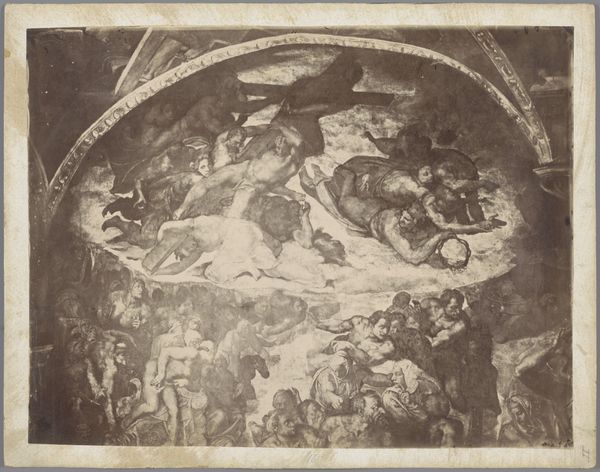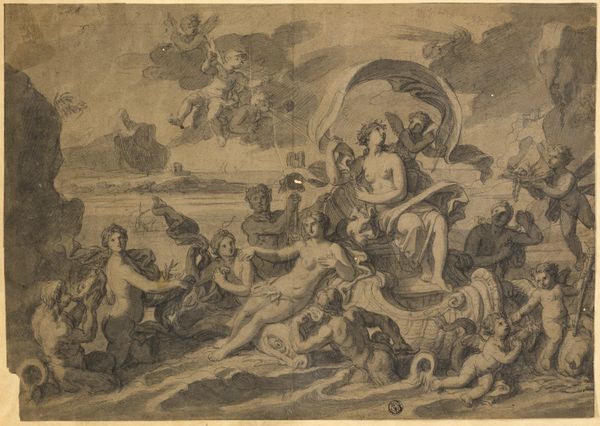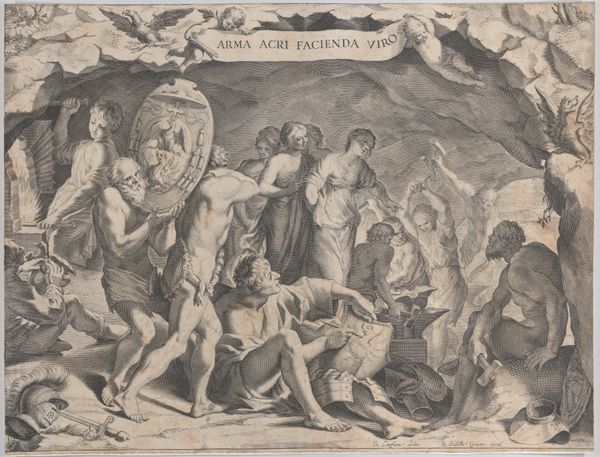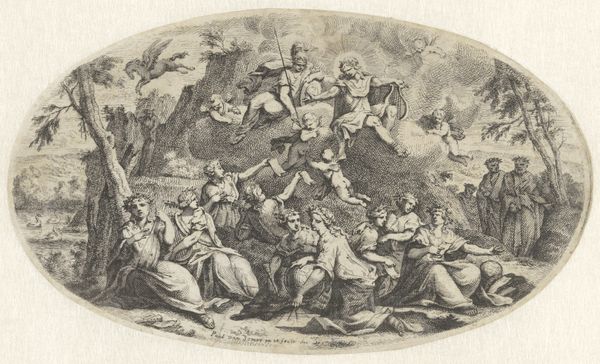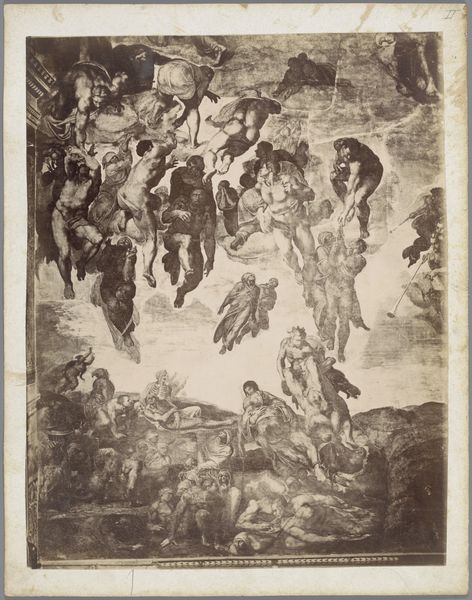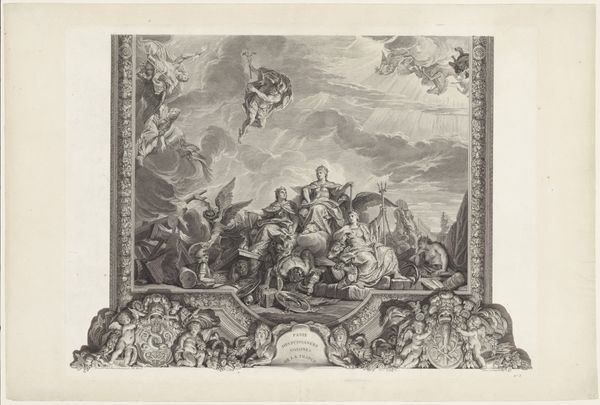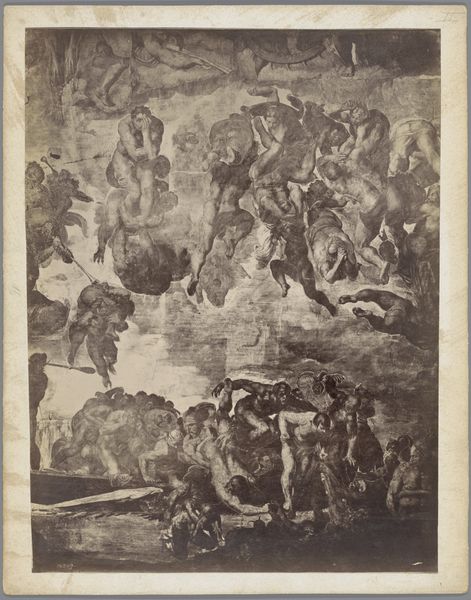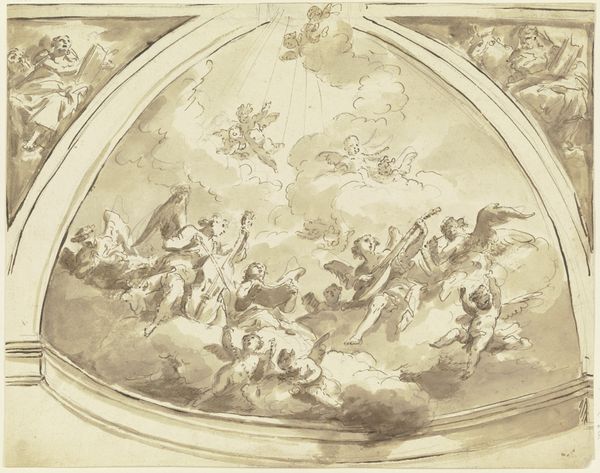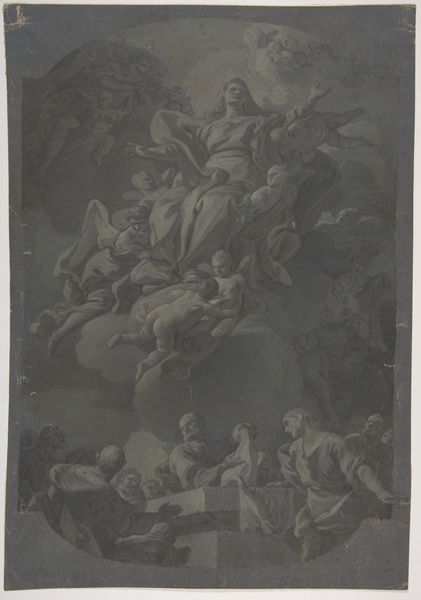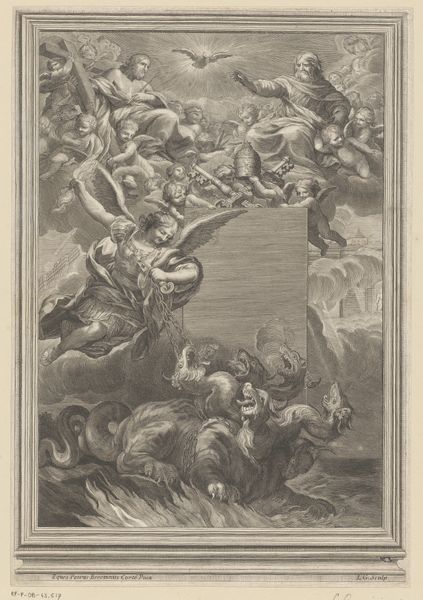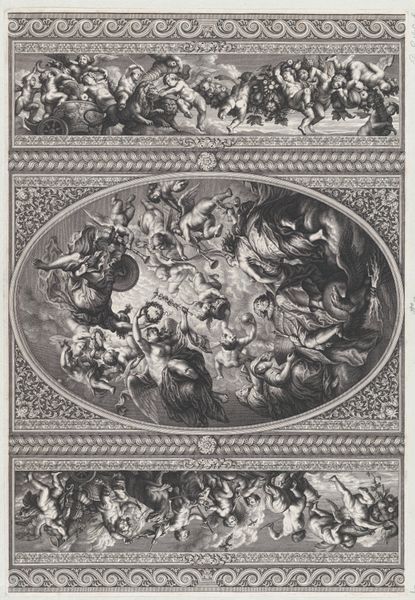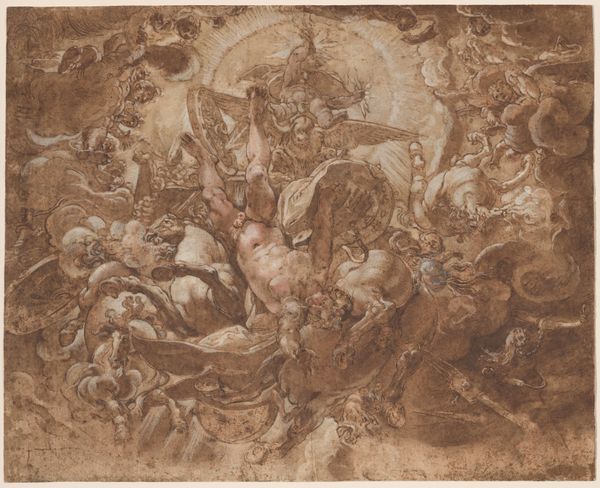
Fotoreproductie van een deel van de fresco's op de muur van de Sixtijnse Kapel te Vaticaanstad door Michelangelo, voorstellende engelen met de passiewerktuigen c. 1875 - 1900
0:00
0:00
print, fresco, photography
# print
#
figuration
#
fresco
#
photography
#
history-painting
#
academic-art
#
italian-renaissance
Dimensions: height 320 mm, width 412 mm
Copyright: Rijks Museum: Open Domain
Curator: Here we have a photomechanical print dating from approximately 1875 to 1900, housed here at the Rijksmuseum. It presents a section of Michelangelo's frescos in the Sistine Chapel, specifically depicting angels bearing the Instruments of the Passion. Editor: It has such a haunting quality, this monochromatic reproduction. It conveys a sense of historical weight and somber reflection on religious trauma. The dramatic swirl of bodies seems almost operatic in its intensity, don't you think? Curator: Yes, absolutely. The dynamic composition is captivating. The figures, though partially obscured by the limitations of the reproduction method, showcase Michelangelo's mastery of the human form. Observe the intricate rendering of muscles and drapery. Editor: It makes me think about the Catholic Church at the time—the amount of control they had over people, how they shaped Renaissance culture. There's something unsettling about viewing religious power presented in such a heroic style. Aren’t these scenes filled with implications regarding patronage and its impact on artistic expression? Curator: Of course. This reproduction allows us to see the aesthetic power of the High Renaissance reduced, abstracted. The academic-art style is toned down here, becoming a simplified scene whose effect lies in the dramatic gestures. Editor: I also ponder how access to such masterworks became democratized. What does it mean for people to view religious art like this through reproductive technology and dissemination strategies? Does it allow wider appreciation, or is there a dilution of the original context and intentions? Curator: It offers access and prompts critical interpretation, even challenging the canon. Viewing these angels bearing witness, do you perhaps perceive a sense of foreboding rather than solace? Editor: Precisely. This photographic fragment transports the fresco, enabling contemplation not only on aesthetic construction, but also on the power dynamics inherent within religious art itself. Curator: It's a fascinating example of how an artwork's essence can be interpreted across centuries and transformed by varying methods of presentation. Editor: Absolutely, it serves as a mirror reflecting shifting cultural contexts and our own evolving perspectives on religion and representation.
Comments
No comments
Be the first to comment and join the conversation on the ultimate creative platform.
